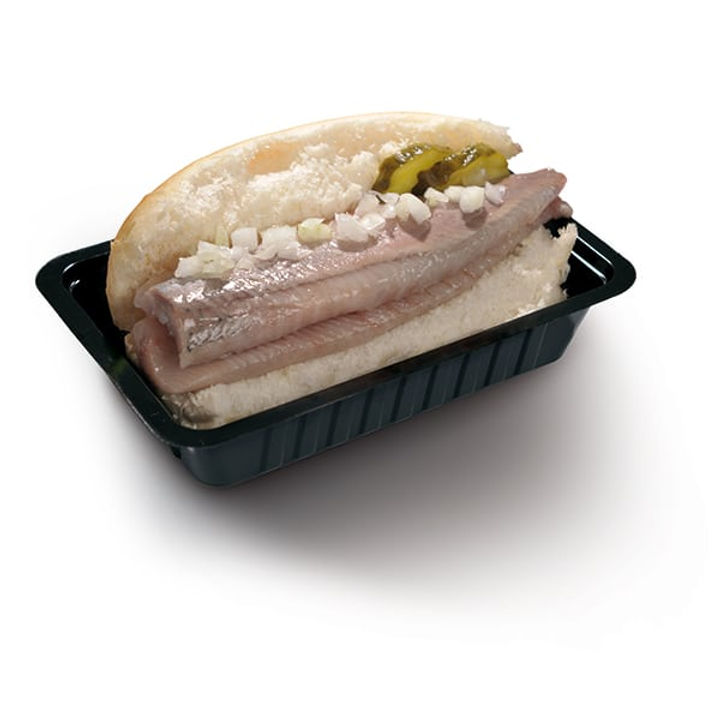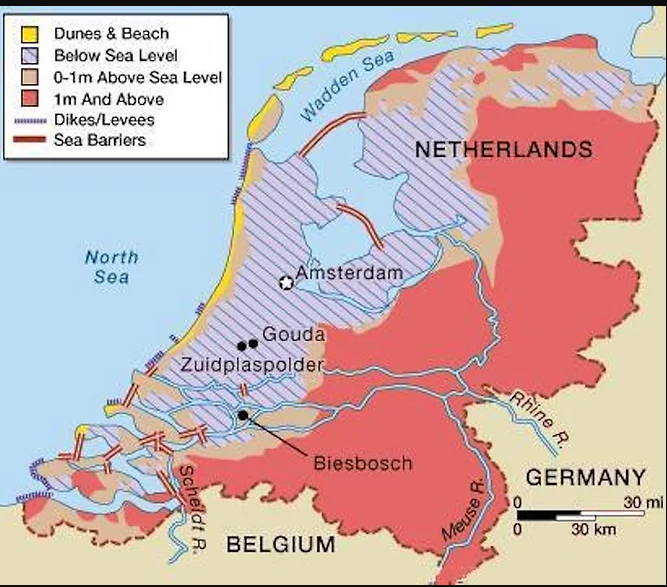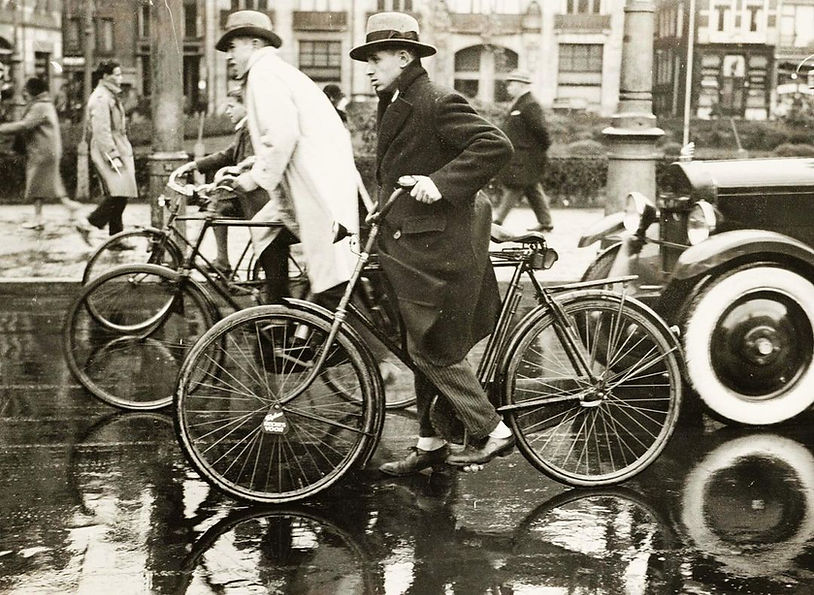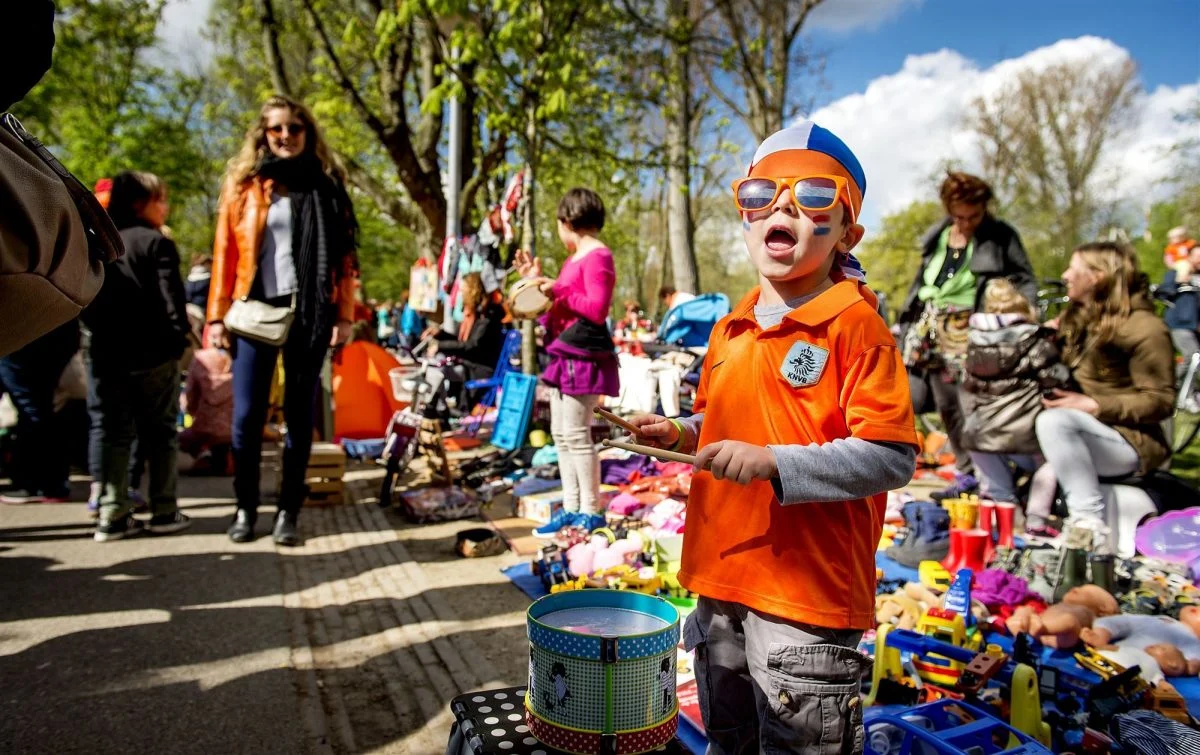A grilled cheese toastie with some decadent Gouda cheese. A warm Dutch pancake with apple and Bacon, topped with the Dutch Stroop. This – and more – is what a typical Dutch breakfast is about! Called ‘ontbijt‘ in Dutch, the first meal of the day in the Netherlands is delicious and will not disappoint any foodies visiting the country. But have you ever wondered where breakfast traditions come from? In collaboration with Hollandshop24, we dove into it to learn about Holland’s top breakfast traditions.

The past and present of a typical Dutch breakfast
Though most Dutchies today cannot imagine going about their day without first having some yummy breakfast, the meal only became a thing around the 1600s. Before that, people ate the same thing in the morning as they did throughout the rest of the day – lots of potatoes, rye bread, and legumes. Meat was too expensive for most people to eat regularly!
Luckily, when the Golden Age – a period of discovery and prosperity – came about, people’s diets improved a lot. It was around that time that breakfast became popular. The most common breakfast foods then were bread, butter, and cheese accompanied by milk, water, or… beer and jenever – a juniper-flavored gin from the Netherlands!
Don’t worry, the Dutchies back then were not all hopeless alcoholics. Home-brewed beer or jenever often substituted water as everyday drinks in most urban areas because the canals in the cities were basically open-air sewers and it was hard to get your hands on clean water.

Of course, coffee, tea, and milk are the most common morning drinks nowadays. But some similarities to how people enjoy breakfast still remain.
Until today, you’ll find lots of bread, cereal, and porridge on most people’s breakfast tables. These staples are often complemented by other delicious breakfast foods, as the Dutch have found ways to make their morning meals much more exciting nowadays!
For a hearty and filling breakfast, sandwiches all the way!
A popular twist that the Dutch have given to their brekkies throughout the years is the good ol’ boterham – a slice of bread covered with some butter and delicious cheese.
Still not enough for you? Then you have to try an uitsmijter. This is a substantial, filling dish that consists of cheese, ham, and a fried egg served on top of a generous slice of bread. The name of the dish means ‘bouncer or to throw out’, and there are many theories about its origin. The most convincing one is that the dish used to be the last thing served in cafés right before they closed and customers were ‘thrown out’.
Cheeseheads with pride
We couldn’t speak of breakfast in the Netherlands without praising the goodness of Dutch cheese. You probably already know that Dutch cheese is among some of the finest in the world – you can’t go wrong with a rich slice of Gouda, Beemster, or Edam. But did you know that cheese has likely been produced in the Netherlands since 800 B.C.?
The wet soil found in most parts of the Netherlands makes the land ideal for herding cattle. Over the centuries, Dutch farmers have experimented with the milk yielded by their cows and invented dozens of different types of cheese. Fun fact: the names of the various types of Dutch cheese usually refer to the region of the Netherlands they originated from.
But it’s not only Dutch cheese that is delicious. Butter in the Netherlands is a bit different from butter in other countries – it’s creamier and makes any breakfast a thousand times better. Plus, milk in the country is so good that it’s common for people to enjoy a glass of plain milk in the morning.

Pancakes, pancakes, pancakes.
Ah, Dutch pancakes! Thin and delicious, Dutch pannenkoeken can be served with a sweet or savory filling. They are the ultimate dish for a weekend breakfast, when Dutchies use their spare time to cook and enjoy some fresh pancakes with the family.
You might have heard of French crêpes and American pancakes, but the Dutch pannenkoeken actually originated from China and Nepal. Somewhere in the 13th century, the recipe including buckwheat, milk, and melted butter, reached the Netherlands coming from Asia. The Dutch haven’t stopped eating pancakes ever since!
Another delicious Dutch breakfast dish is poffertjes – small, fluffy pancakes served in portions of ten or so. These treats came about much later. The first poffertjes we know of were served at a fair in Amsterdam in 1734!
Spreads, sprinkles, and sweets!
One easy way Dutchies take breakfast to the next level is by spreading a generous layer of jam or peanut butter on their breads. And let me tell you, peanut butter here is creamier and richer than you’ll find anywhere else!
The Dutch also enjoy the traditional hagelslag on their bread as a tasty topping. These consist of sweet sprinkles served as a topping on bread. The most common ones are made out of chocolate, but there are many delicious varieties with aniseeds, fruit, and more! The first ever hagelslag was made of liquorice and invented in 1919 by the sweets company VEMCO. This quintessential Dutch treat was later popularized by De Ruijter and other companies. Today, they are a massive success among Dutch kids and adults alike!

But if you’d like to try something sweet that doesn’t involve bread, we got you. The most popular breakfast pastry in the Netherlands is called an ontbijtkoek. These are typical cakes spiced with ginger, cinnamon, and nutmeg. Though gingerbread has been around since the 13th century, this delicacy became spiced only in the 17th century. Not coincidentally, this is when spices from former Dutch colonies reached the country for the first time.
Beschuit met muisjes: a sweet tradition of breakfast and birth!
After the birth of a child in the Netherlands, friends and family are treated to a special breakfast dish – beschuit met muisjes! Beschuit is a special type of round, thick toast. It has existed since the Roman era, but beschuit became particularly popular during the Golden Age. Because these toasts are twice baked, they have a long shelf life which made them the perfect food for sailors to take with them on their long journeys.
Muisjes are aniseed sprinkles that are typically sold in blue or pink colors. Their name translates directly to ‘mice’, probably because the aniseeds usually have a ‘tail’ that makes them look like tiny mice. But trust us, they taste delicious! To celebrate the birth of a newborn, muisjes are served on top of a beschuit with a layer of butter. The color of muisjes used, depends on the sex of the baby. The custom started when Princess Beatrix was born in 1938 and sprinkles manufacturer De Ruijter gifted the royal family with a tin of muisjes. Now that is one unique Dutch tradition!
Do I hear your stomach growling after all this yummy food talk?
Luckily, traditional Dutch breakfast dishes are not too hard to make at home! We hope we have inspired you to treat yourself and enjoy a special Dutch breakfast. Go to our Culture Blog page if you want to learn more about all the culture we have here in the Netherlands!
Geniet ervan en tot ziens! – 😉🇳🇱
* This post was created in collaboration with Hollandshop24.




















Leave a Reply